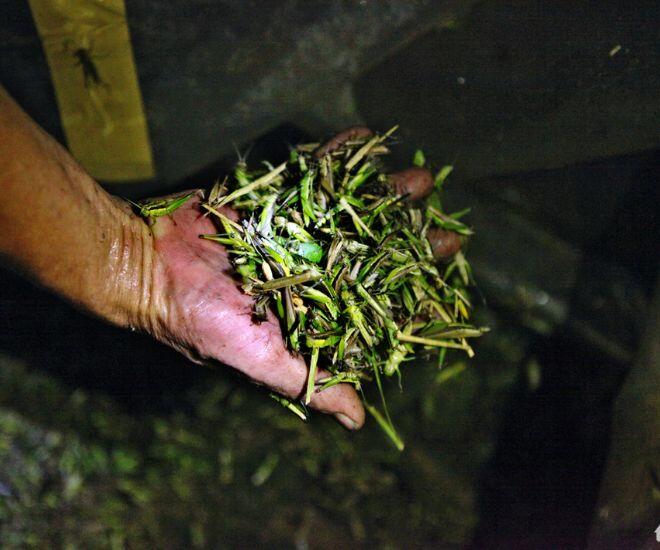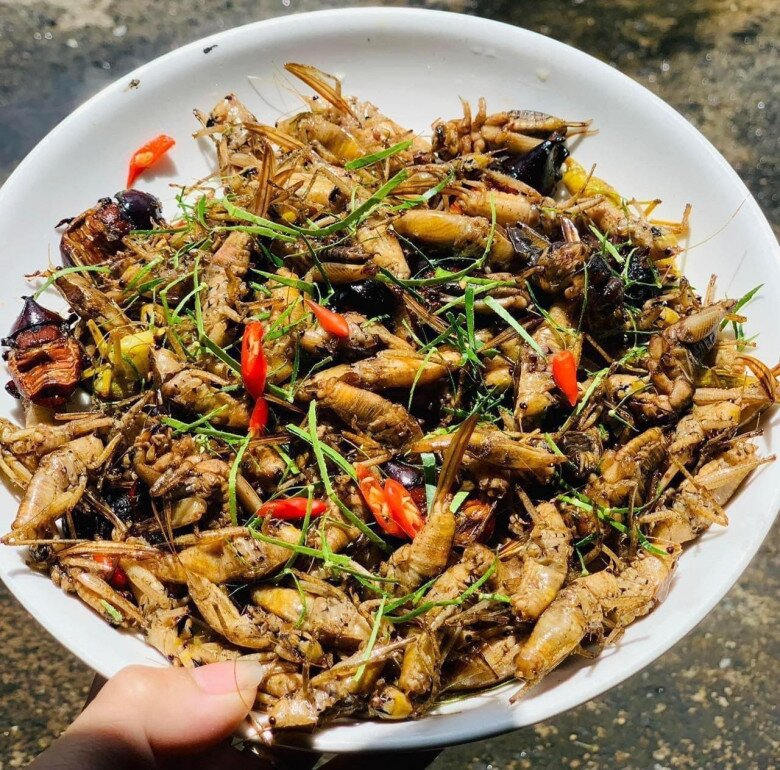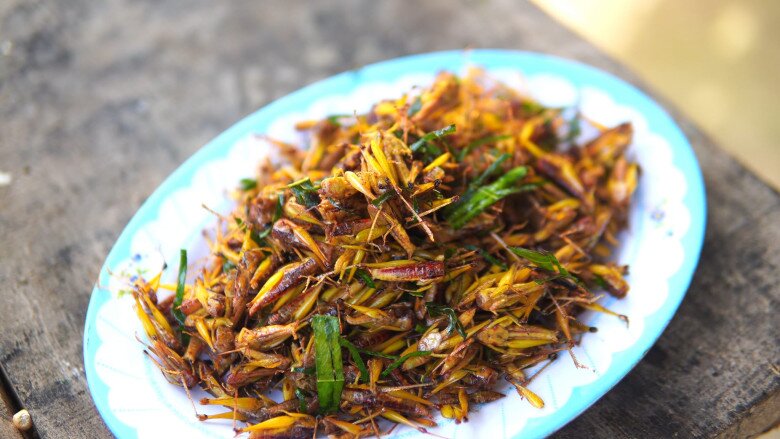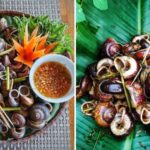
With a slender body and multiple legs resembling aquatic crustaceans, grasshoppers have earned the nickname “flying shrimp.” They are most abundant from early August to September, coinciding with the summer-autumn rice harvest. This is their vigorous growth phase, especially in the vast fields of Central Vietnam. Once considered mere poultry feed, grasshoppers have undergone a culinary revolution in recent years, with people recognizing their culinary and nutritional value. Many claim that grasshoppers are not only nutritious but also possess a unique flavor, even surpassing chicken in taste, transforming them from pests to profitable delicacies.
This transformation has elevated grasshoppers from a rural delicacy to a rare specialty highly sought-after in urban areas, especially Hanoi. Unlike previous years when they were inexpensive and readily available in bulk, grasshoppers now command a high price, and demand remains relentless, reflecting the irresistible appeal of this extraordinary “flying shrimp.”

During the grasshopper season, hundreds of households in rural Nghe An, particularly in Dien Chau and Yen Thanh, and even Ha Tinh, flock to the fields to engage in grasshopper hunting. This activity has become more than a mere pastime; it has evolved into a lucrative side hustle, providing a stable income for many families right in their hometowns.
The hunting technique is straightforward but requires agility and experience. When grasshoppers are abundant, all one needs is a large net attached to a motorbike. As the motorbike moves along the field paths, the grasshoppers instinctively fly into the net. During periods of lower grasshopper density, longer nets ranging from 7 to 10 meters or even longer are employed for more efficient capture.
With attractive purchase prices ranging from 130,000 to 150,000 VND per kilogram and a simple hunting method, grasshopper hunting has become a reliable source of income for many. During peak seasons, an individual can catch up to ten kilograms of grasshoppers, earning over one million VND per day. Even on days with fewer grasshoppers, they can still make around 500,000–600,000 VND. Notably, the caught grasshoppers are immediately purchased by traders on the same day, ensuring a stable and smooth outlet. Most of the grasshoppers are then transported to the northern provinces, where there is a high demand for this specialty, with Hanoi being the strongest market.

Unlike the winter-spring season, which lasts only about ten days, the summer-autumn season brings a genuine “golden” opportunity for grasshopper hunters, spanning 3-4 months. At the beginning of the season, purchase prices soar to 100,000–150,000 VND per kilogram. During this period, the grasshoppers carry eggs, making them exceptionally fatty and delicious, rendering them even more precious and sought-after, despite the higher prices compared to previous years.
According to grasshopper hunters, the profession is not overly strenuous or arduous. The supply chain is well-organized, ensuring a steady outlet for the natural specialty. As grasshoppers are only available wild-caught during two seasons of the year, they have naturally become an expensive delicacy that urbanites are willing to pay a premium for. Many have sought to purchase them directly from rural areas and transport them to the city for gradual consumption.

The allure of grasshoppers lies not only in their economic value and rarity but also in their unique flavor and simple preparation. Once purchased, grasshoppers are briefly immersed in boiling water, then carefully plucked and gutted. Next, a small amount of pork fat is melted in a pan, and the grasshoppers are added and stir-fried until they turn a reddish-brown color. Seasonings, chili, and pepper are added to taste, and the grasshoppers are continued to be stir-fried until they become a glossy brown, emitting a delightful aroma. Finally, finely chopped lemon leaves are sprinkled on top, and the dish is ready to be savored.
For connoisseurs, there is a special trick to enhancing the aroma and flavor of this “flying shrimp”: adding a bit of salted fermented shrimp paste during cooking. This not only boosts the flavor but also helps maintain the grasshoppers’ delightful crispness. The final dish is a crunchy, slightly sour, and fragrant delicacy adorned with lemon leaves, captivating palates from rustic villagers to urbane epicures.
From a tiny field insect, the grasshopper has emerged as a symbol of natural abundance, delivering high economic value and enriching Vietnam’s diverse culinary landscape. It is a fascinating tale of how a local delicacy can rise to conquer the market and become a sought-after specialty, a true “golden” delicacy.
































